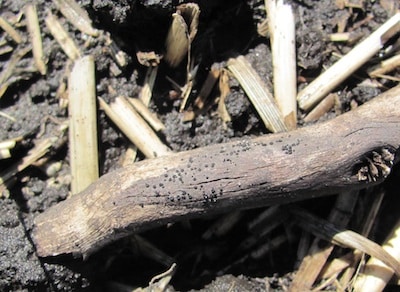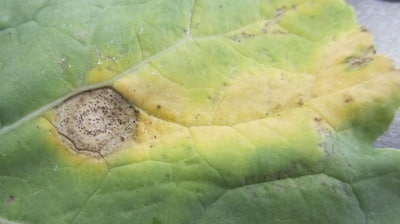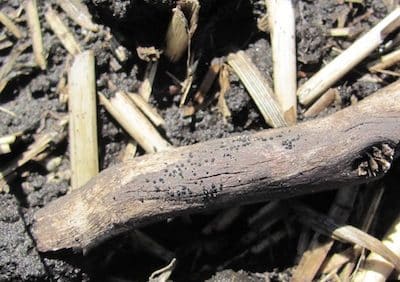

Growers in areas where blackleg infection was known to cause yield loss last year may choose to apply fungicide early in the season.
Here are factors that increase the blackleg risk. The more of these risk factors that apply, the greater the risk:
—Tight canola rotation
—Using the same variety in the rotation
—Yield loss to blackleg in previous years
—Using untreated non-certified seed
—Poor brassica weed control in previous years. These weeds can host blackleg in non-canola years
—Moist soils and warm humid conditions
—Lesions on leaves or cotyledons. These tiny lesions may be tricky to spot, and you probably won’t see many of them. When scouting, also look for blackleg pseudothecia (black spots) on old canola residue, which may still be present on fields with a tight rotation. Note: Even if you can’t spot lesions on new plants or black spots on old stubble, infection could still be happening.
If the above factors and your crop scouting suggest high risk for blackleg, consider fungicide as an additional tool to limit infection and yield loss. Headline and Quadris are available for blackleg management in canola. For more information on these products, click your province for a link to your guide: Alberta Saskatchewan Manitoba. Use fungicide to manage blackleg only in high risk areas known to have blackleg. If unsure about the decision, leave a few check strips and compare yields of treated to untreated areas.
Click here for more blackleg management tips and here for more on blackleg in general. The Canola Diagnostic Tool can help with diagnosis of problems spotted in the field.

